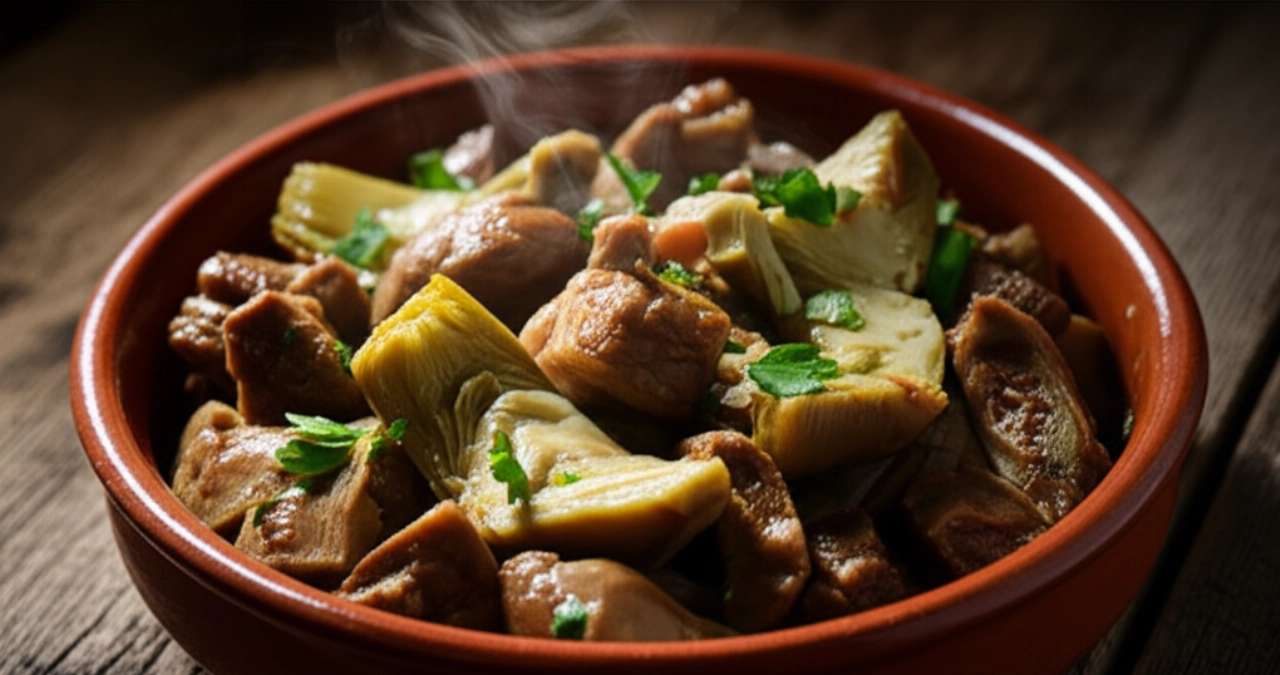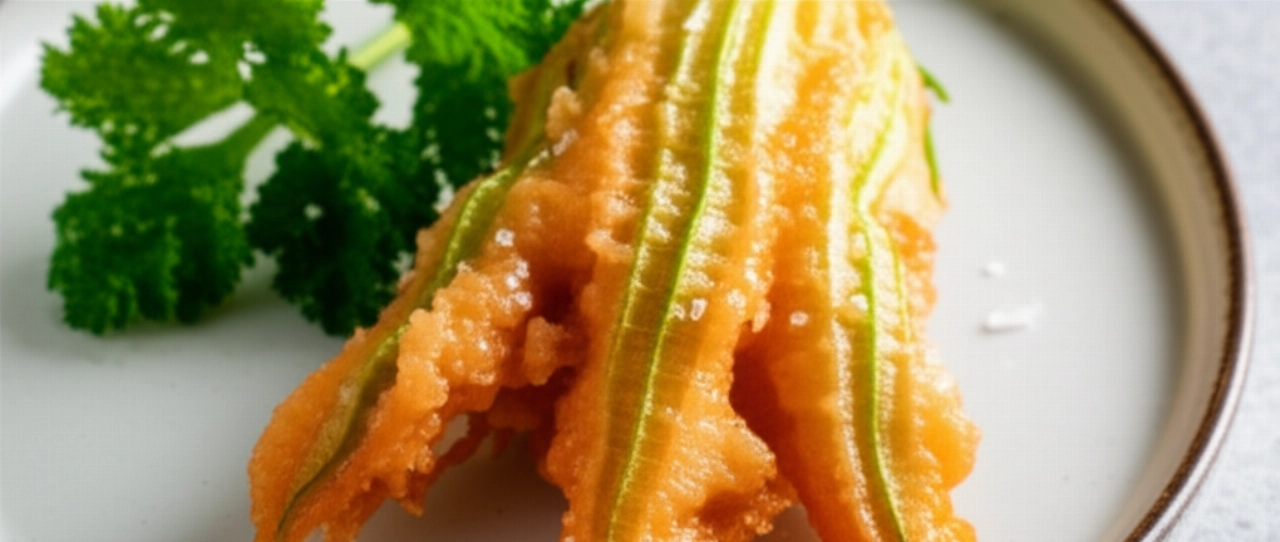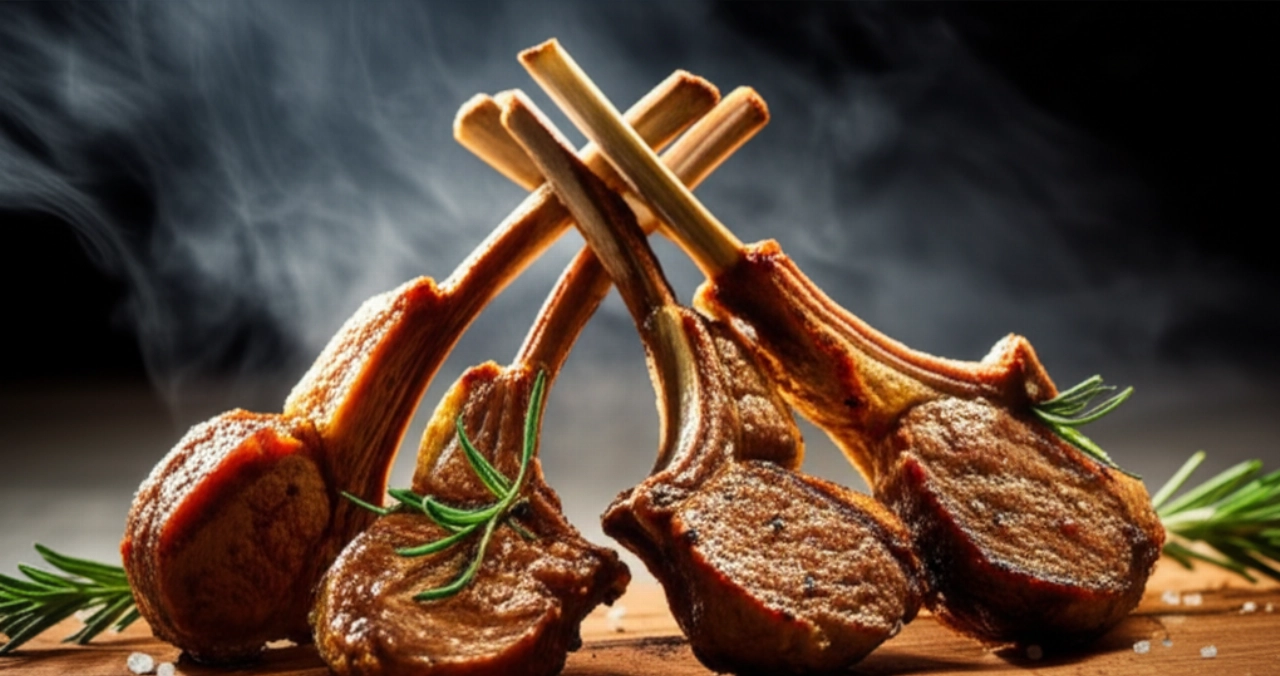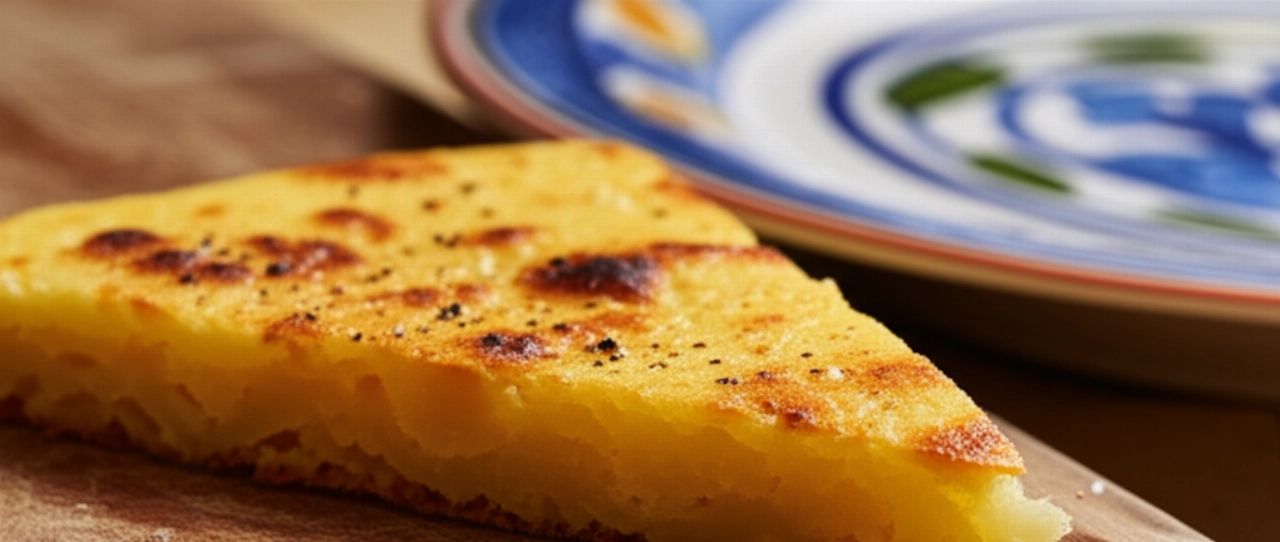Do you dream of bringing Carciofi alla Giudia to the table so crispy you hear a 'crack' with the first bite, with a soft heart and a flavor that takes you straight back to Rome? Imagine the applause of your guests, the aroma intoxicating the kitchen, the satisfaction of having replicated a masterpiece of tradition.
But how many times have you tried to make them and they turned out soggy, burnt, or, worse, bitter? Finding 'that true' recipe, the one that guarantees a perfect result without unpleasant surprises, seems almost impossible. The fear of wasting precious ingredients and failing precisely when you have important guests is a common thought, isn't it?
Make yourself comfortable. Here you won't just find a list of ingredients, but the definitive guide, full of tricks and tips, to prepare the best and most perfect Carciofi alla Giudia of your life. I'll guide you step by step to get artichokes as crispy as a blooming flower, with a tender and never bitter heart. No more 'boiled' or 'burnt' effects! Success is guaranteed, grandma's word!
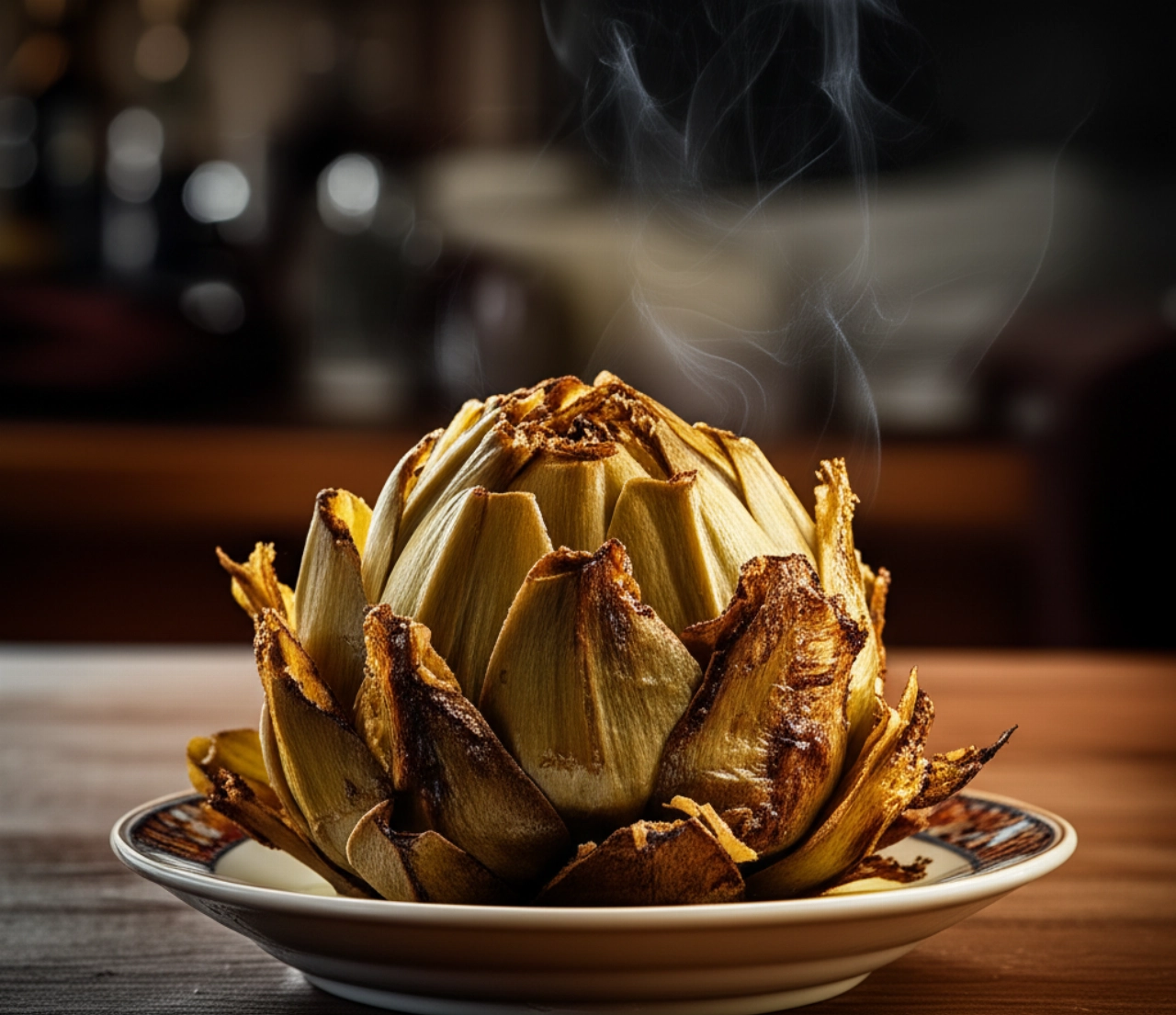
Ingredients for Perfect Carciofi alla Giudia: The Choice That Makes the Difference
The magic of Carciofi alla Giudia begins with ingredient selection. It's not just about quantity, but quality and understanding the role of each.
- Roman Artichokes (or Mammole): They are the undisputed stars! Choose round, compact, heavy artichokes with tightly closed leaves. Their tenderness and almost complete absence of internal 'beard' make them perfect for this recipe. Do not use thorny or too small artichokes, as you risk a fibrous result.
- Extra Virgin Olive Oil: No compromises here! The oil must be abundant and of excellent quality. It is the medium that transforms the artichoke, giving it that golden crispiness and unmistakable flavor. Don't skimp; it's the secret to perfect frying.
- Lemon: Essential for the pre-frying bath. Not only does it prevent oxidation (artichokes turning black!), but it also helps maintain their freshness and prevents that slight bitter aftertaste they can sometimes have.
- Roman Mint (or Mentuccia): This is the magical touch, the aroma that transports you directly to Roman trattorias. A few small leaves inserted between the artichoke bracts will release a fresh and unique aroma during cooking. It's not mandatory, but it makes a difference!
- Salt and Pepper: Simple, but fundamental. Salt enhances the flavor, pepper adds a touch of liveliness.

The 3 Mistakes That Make Carciofi alla Giudia Soggy or Bitter (and How to Avoid Them)
I've seen too many people get discouraged by this dish. Often, the fault isn't with skill, but with small, easily avoidable mistakes. Here are the most common ones:
- Incomplete or Incorrect Cleaning: If you don't clean the artichoke properly, leaving hard parts or the internal 'beard', the result will be fibrous and bitter. You must remove all the tougher outer leaves and cut off the tip, leaving only the tenderest part.
- Inadequate Oil Temperature: This is crucial! If the oil is too cold, the artichokes will absorb too much fat and become soggy and greasy. If it's too hot from the start, they will burn on the outside while remaining raw inside. The key is a double cooking process at different temperatures, as I will explain.
- Not Draining Correctly: After frying, it's essential to remove excess oil. If you leave them in the oil for too long or don't drain them well, they will lose their crispiness and become heavy.
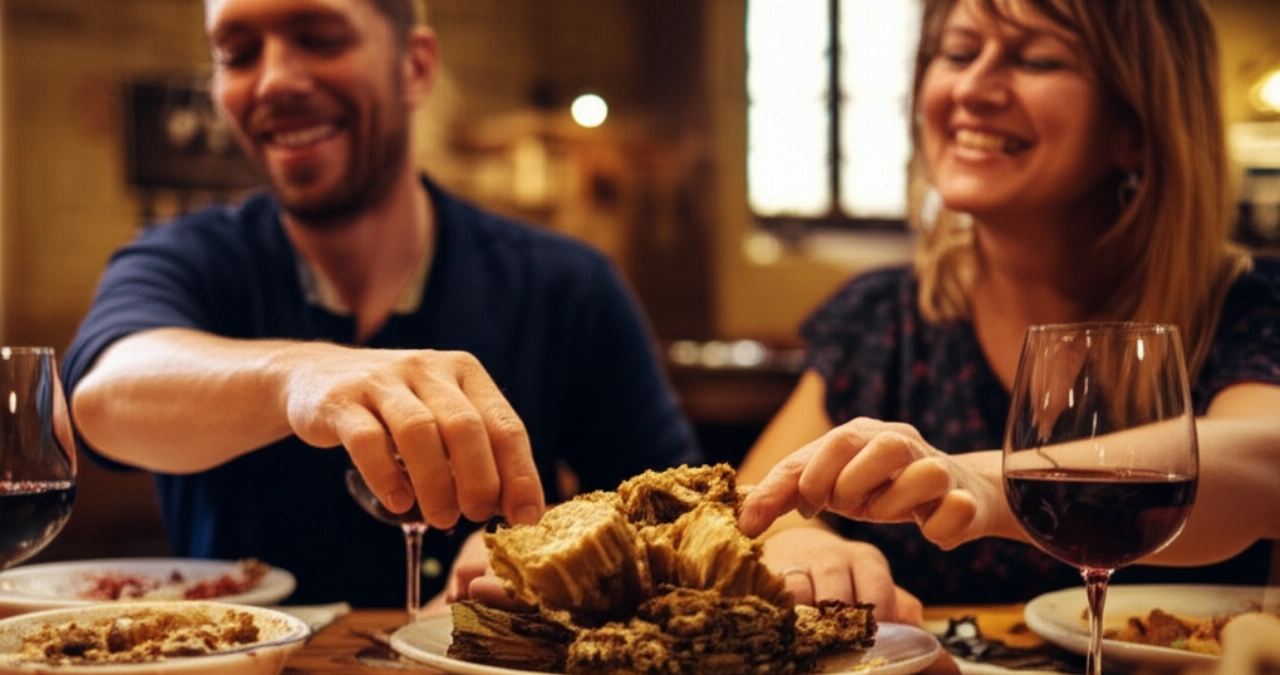
The Extra Touch: The Advice My Grandmother Passed Down to Me
My grandmother, the true guardian of Roman flavors, always told me: “Carciofi alla Giudia are not just a dish; they are an opening, a flower blooming on the plate.” Her secret for perfect crispiness and a tender heart was double frying. Not a single, violent fry, but two steps that allow the artichoke to cook slowly inside and become incredibly crispy on the outside.
The first step, over medium-low heat, serves to cook the artichoke until tender. The second, over higher heat, is what gives it that golden color and irresistible crispiness, making the leaves 'bloom' like a flower.
Let's Prepare Carciofi alla Giudia Together: The Step-by-Step Guide
Now that you know the secrets, let's get cooking! Follow these steps, and success is guaranteed.
- Cleaning the Artichokes: Prepare a large bowl with cold water and the juice of one lemon. Clean the artichokes one by one: remove the tougher outer leaves until you reach the lighter, more tender ones. Cut off the tip of the artichoke (about 2-3 cm) and trim the stem, leaving about 3-4 cm. If present, remove the internal 'beard' with a spoon. Immediately immerse the artichokes in the acidulated water to prevent them from blackening.
- Blooming the Artichoke: Once all artichokes are cleaned, drain them and gently pat them dry with a clean cloth. With your hands, gently press the base of the artichoke on the cutting board and then, delicately, 'open' the leaves outwards, as if you want a flower to bloom. Insert a few small Roman mint leaves between the bracts, if using.
- First Fry (Internal Cooking): In a tall, narrow pot (ideal for deep frying), pour abundant extra virgin olive oil. Heat the oil to a medium temperature (about 140-150°C). Immerse the artichokes head-down, one or two at a time, without overcrowding the pot. Fry them for about 8-10 minutes, or until they are tender and lightly golden. Drain the artichokes and place them on absorbent paper, head-down, to remove excess oil.
- Second Fry (Crispiness): Raise the oil temperature to about 170-180°C. Re-immerse the artichokes, still head-down, for a few minutes (2-3 minutes maximum), until they are golden and the tips of the leaves become very crispy and almost charred. It will be a 'crack' you can hear!
- Draining and Serving: Drain the artichokes again on absorbent paper, this time head-up, to eliminate residual oil. Salt and pepper them generously. Serve them immediately, very hot, to fully enjoy their double texture.
Tips and Frequently Asked Questions about Carciofi alla Giudia
Here are some of the questions I get asked most often, with answers that will help you clear any doubts.
Which artichokes are best for this recipe?
Roman Artichokes, also called Mammole, are ideal. They are tender, almost thornless, and have little internal 'beard'. If you can't find them, look for round, compact artichokes, making sure they are fresh and heavy.
Can I prepare the artichokes in advance?
Carciofi alla Giudia are best enjoyed freshly fried, when they are hot and crispy. You can clean them and leave them in water and lemon for a few hours, but it's best to fry them just before serving to ensure maximum crispiness.
How can I prevent them from turning black during cleaning?
The secret is to immediately immerse them in acidulated water with lemon juice as soon as you clean them. Lemon blocks oxidation and keeps them light.
Can I cook them in an air fryer?
An air fryer can yield a good result, but it will never be the same as deep frying in oil. The true crispiness and authentic flavor of Carciofi alla Giudia are only achieved by immersion in hot oil. You can try it for a lighter version, but be aware that the result will be different.
How to store leftover Carciofi alla Giudia?
If there happen to be any leftovers (which is rare!), you can store them in the refrigerator for one day. To reheat them, I recommend placing them in a hot oven for a few minutes to try and regain some crispiness, but don't expect the same result as when freshly made.
A Masterpiece of Flavor and Tradition: Your Carciofi alla Giudia
There you have it! Now you no longer just have a recipe, but all the secrets to bring a dish to the table that tastes of Rome, tradition, and love. A side dish, an appetizer, or a light main course that will win everyone over with its double texture: crispy outside, tender and flavorful inside.
Don't be afraid to dare. Cooking is an act of creativity, but with this solid guide, success is guaranteed. Prepare your artichokes, smell the aroma that fills the air, and savor every single bite of this Roman culinary marvel.
Have you tried our recipe? We're very curious to see your masterpiece! Leave a comment below, tell us how it went, or share a photo on Instagram by tagging @CercaRicette.it. If you loved these artichokes, you can't miss our recipe for Saltimbocca alla Romana or an unforgettable first course like our Perfect Cacio e Pepe.

